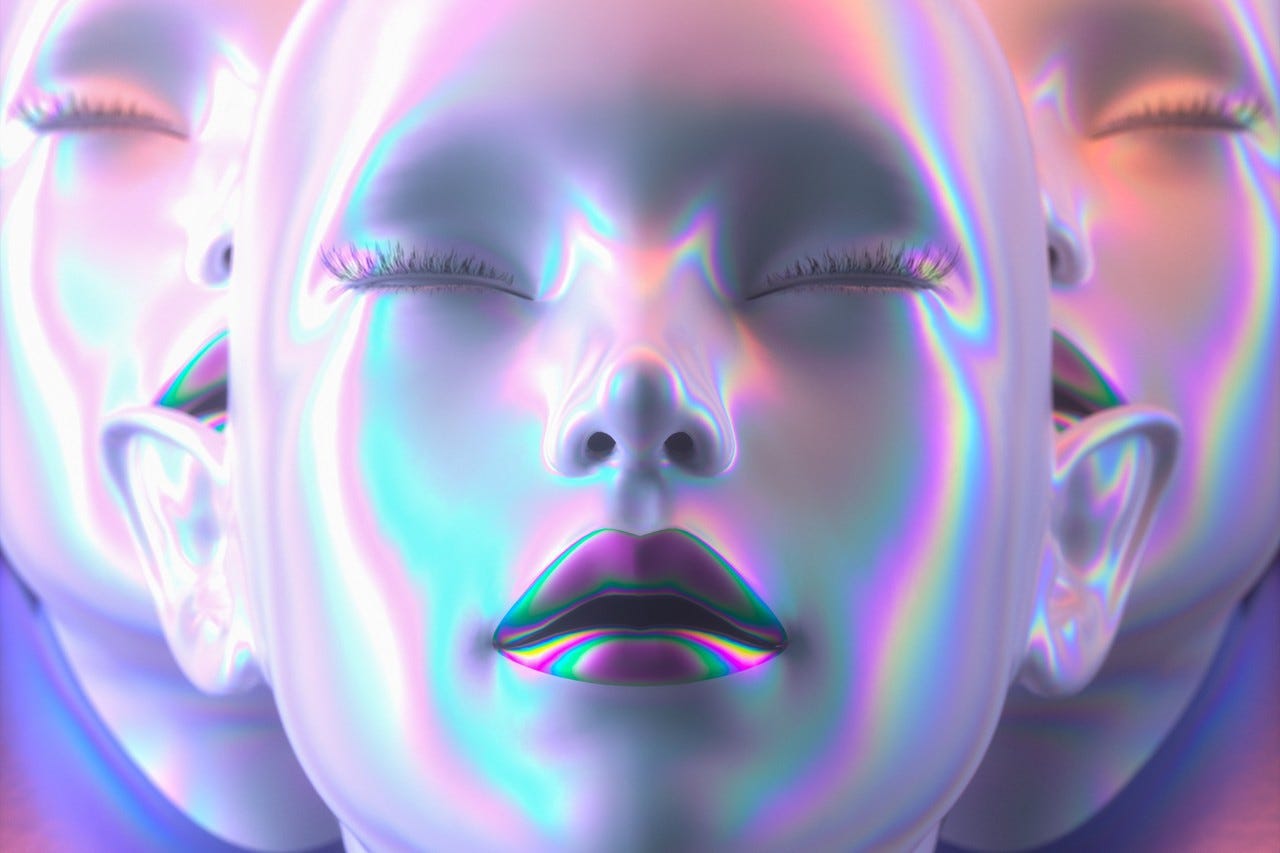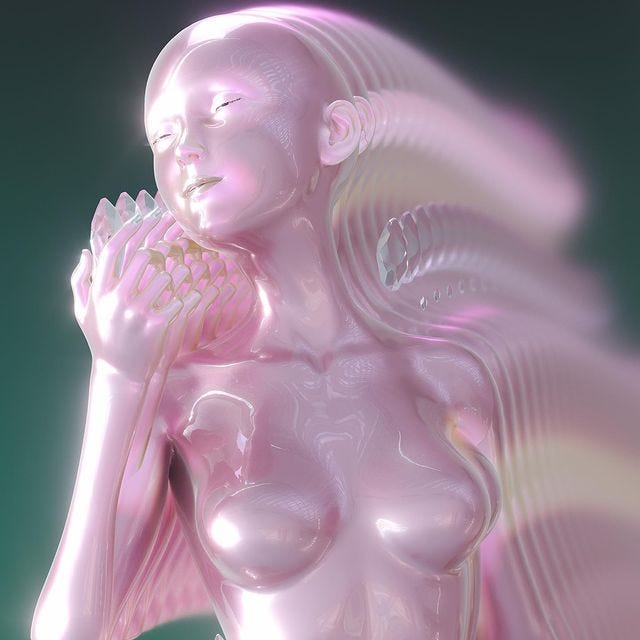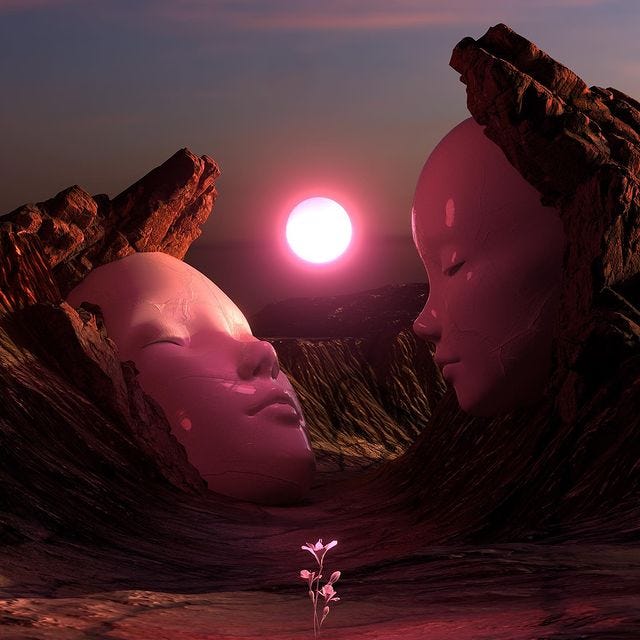Hi, I’m Hima Batavia - a writer, cultural producer, artist, and community organizer based in T’karonto and the great infinite. This newsletter is a space to write liberated futures into being. You can learn more about me, my social location, and this newsletter here
There is a particular kind of assault when scrolling Twitter and Instagram after a tragedy. An emotional whiplash between posts that acknowledge the latest realization of white supremacy, with the gentle face(s) or name of the victim(s) side by side with the continuation of monotonous life: cuddly cats on sweaters, second round pandemic birthdays, spring outfits twirls, virtual event flyers, and babies eating pie. Of course, ‘life goes on,’ but the reminder of the speed at which it does is a fact I would rather not know.
Since we have no shared cultural norms on how to hold space for tragedy in the digital commons, we, myself included, participate in the ‘activism post’ roll call. This communications chaos is likely why for Black and Brown folks, staying off social media is often a well-being prescription to mourn the loss of yet another young man worthy of a full, safe, and free life. The social impact of this 24-48 hour procession lies somewhere between an ‘in your face, can’t ignore’ amplification of the movement, legitimate education and reckoning, and routine performance of political correctness. The emotional impact of processing senseless death, depraved systems, and grotesque dehumanization in small, repetitive motions, appears to be a chilly numbness, I’ve learned.
Though this asynchronous deluge of consumption is unfamiliar when compared to neatly sectioned and tagged newspapers, one may argue its cadence is more reflective of the incongruous experience of contemporary human life. After all, even when someone dies, we have to consider which tea sandwiches to serve. We are increasingly living a multitude of realities in a hyperconnected world, bouncing from coordinating a work meeting to processing police state violence, tweeting during a bowel movement, and then checking in on your mother’s swollen knee and a friend living through a volcano eruption, while doing your taxes and investing in your RRSPs, but wondering if it's worth it because #crypto, and then writing a grocery list in your head while driving to the park for a picnic and walking past temporary and targeted encampments when buying a $5.00 coffee and eventually feeling insecure about the tweet from earlier. On top of it all, to manage this reality, we have to temporarily suspend it and immerse ourselves in fictional realities. It’s a lot.
Our stories have only started to reflect this dissonance of experience (Jude Apatow’s Netflix show, Love, comes to mind) that is far from cohesive. To date, we’ve typically been tied to a three-part story template: beginning, middle, and end along with Joseph Campbell’s, ‘hero’s journey,’ which mirrors a linear, Christian conception of time and human life that begins at birth and ends in heaven, and has shaped modernity globally. Story structures that reflect Buddhist and Jain conceptions of eternal souls reincarnated in human form are rare, less Indigenous conceptions of land stewardship and interconnectedness with all living beings, elements and spirits. In a recent 6-week workshop I participated in, we co-wrote speculative fiction based on possible climate futures. Amongst the 8 participants, there was surprising unanimous agreement to place the story on an infinite timeline, where characters were able to seamlessly move through the past, present and future for experience and guidance. This unfamiliar story structure took some mental gymnastics, but it certaintly pushed the boundaries of what experience of human life was possible and available to us.
The impact of consuming asynchronously has been twofold for me. First, quite bluntly, I feel completely braindead. I am uncomfortably aware of how my brain has changed and continues to morph to ingest and metabolize our collective trauma body through short, but dense, spurts of consumption. Tristan Harris, from the Center for Humane Technology calls this dopamine-driven phenomenon the ‘downgrading’ of humanity. Typically when humans are changing, we tend to default to the ‘impending doom’ the loss suggests. In reality, change is just different, unrecognizable, where a way we have known to operate is dissolving for a new behavior to emerge that aligns with what the context needs at that time. I am brain dead yes, but it’s partly because I have not fully reconfigured to this ‘new normal.’ The second impact is that I can not hold the three-part story structure in the same way, because it feels wholly out of tune with a reality where resolution is elusive and there is constant confusion between bite-size information and misinformation. Stories are either moving at new tempos, are a corroboration of hundreds of micro-stories, or a continuous feed until the end of eternity.
Stories and mythology have always been the primary tool to document and interpret human experience, and the hero’s journey has been a structure that has allowed for lessons to be neatly distilled and graciously passed on to the next generation. Even now, during the pandemic, we’ve looked to stories from the 1918 Spanish Flu period to support us in navigating the unknown, to find nuggets of guidance and hope that will soothe our shared loss of control.
Though I wonder - do our stories shape our expectations, or do our realities shape stories? Do we seek redemption because resolution is a human need, or have we been made to romanticize redemption, to live our own hero’s journey?
There is some wisdom that is ineffiable to human life, but the level of change we are experiencing right now, and will continue to, feels unprecendented. Will traditional myths serve and guide us? I suspect with 24/7 documentation and consumption of human experience, between the traumatic and worn, how we tell stories will continue to take on new formats and shape how we relate to ourselves and each other in this ‘new’ era. Stories offer us containers to support our own introspection and self-determination because inevitably we find a part of ourselves between the lines. Yet, as quickly as our stories liberate us, they trap and fail us if we don’t engage in cycles of deconstruction and rewriting to serve new circumstances, desires, and moral revelations. Finite stories especially lock us into imagined realities, where fiction is mistaken as truth, without room to adjust to the evolving and expanding nature of consciousness. In Ijeoma Oluo’s book, So you want to talk about race? she humbly acknowledges that the ideas of justice that we are shaping and calling for today may very well, unknowingly, oppress and harm her young son decades from now, if not rewritten and reconsidered.
It’s possible that asynchronous storytelling that replaces the three-part structure with continual evolution, will offer us greater freedom to see stories as both wise and fleeting, rather than true and dogmatic. To adjust to rapid change, we may need more of them, in short spurts, to mirror the pace of life. This evolution is already in motion, with storytelling platforms like Wattpad, where stories can be shared, revised and reshared, and Async Art, where art is considered a ‘programmable living entity’ ever-evolving on the blockchain. Even our social media platforms, which is archival of our personal story, is an emerging, breathing entity. The danger of asynchronous life is overindexing on breadth versus depth, which seems to be the fuel for misinformation, and rediscovering what commitment means to us in a narrative of constant change and evolution.
The systems that have dominated almost every part of our reality for centuries are haggard, harmful stories, conveniently mistaken as fact. They are rupturing. And there will be gruesome retaliation. Oppressors will grasp the power these stories have afforded them with a fear that is wicked and generational and will resist losing what is left of a fractured and frail identity. As we’ve learned in the past year, ordinary life will continue alongside a complete revamp and restructuring of how humans co-exist with each other and the living world; adopting ancient ideas with new intentions and beginning a new cycle of civilization. All the signs are here — pandemic-fueled reprioritization, land back movements, widespread mistrust in state power, racial and political uprisings, decentralized economies and infrastructure, a return to mystic and ancestral traditions, abundant virtual communities, exits from educational and cultural institutions, psychedelics renaissance, mobilizing against traditional financial markets, and so much more. We are going to need stories to guide us through so much change at once, and I’m certain, they won’t make sense as we understand sense today.
Much love,
Hima
*Rest in Power Daunte Wright and Adam Toledo
worthy rabbit holes
Deep Reckonings // An art project by Stephanie Lepp, who scripts deepfakes where leaders such as Zuckerberg apologize for their misdoings
BitClout // The new decentralized social network, owned by no one, where everyone has a personalized coin.
Virtual Care Lab // A series of creative experiments exploring care in virtual togetherness
Earthseeds // The religion inspired by Octavia Butler’s work rooted in change as the manifestation of God






